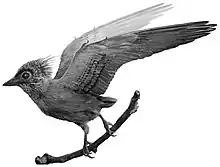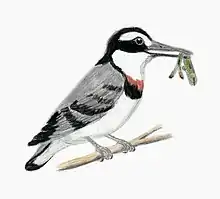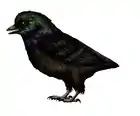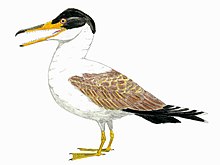| Gobipteryx Temporal range: Late Cretaceous, | |
|---|---|
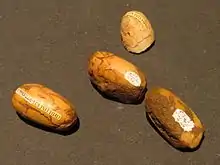 | |
| Eggs of Gobipteryx minuta | |
| Scientific classification | |
| Domain: | Eukaryota |
| Kingdom: | Animalia |
| Phylum: | Chordata |
| Clade: | Dinosauria |
| Clade: | Saurischia |
| Clade: | Theropoda |
| Clade: | Avialae |
| Clade: | †Enantiornithes |
| Family: | †Gobipterygidae |
| Genus: | †Gobipteryx Elżanowski, 1974 |
| Species: | †G. minuta |
| Binomial name | |
| †Gobipteryx minuta Elżanowski, 1974 | |
| Synonyms | |
Gobipteryx (from Gobi [referring to the Gobi Desert where it was first discovered], and Greek pteryx “wing”) is a genus of prehistoric bird from the Campanian Age of the Late Cretaceous Period.[1] It is not known to have any direct descendants.[1] Like the rest of the enantiornithes clade, Gobipteryx is thought to have gone extinct near the end of the Cretaceous.[2]
Description
Based on a skull length of 45 millimeters, Gobipteryx has been estimated to be approximately the size of a partridge.[3] Its bones are fibrolamellar.[4]
The skull's general shape is gradually tapering toward the front.[1] Gobipteryx has a toothless beak[1] formed from the fusion of the premaxillae bones.[5] The skull is characterized as being rhynchokinetic[1] with the pterygoid bones articulating with both the vomers[3][6] and the palatine.[1][3] The nares are tear shaped and the choana is located below them, more rosteral than in most modern birds.[7] The nares are smaller than the antorbital fenestrae, a basal feature for ornithurae birds.[7] In addition, Gobipteryx's skull has an articulated rostrum.[7] The jaw hinge is associated with the articulation of the quadrate with the pterygoid processes.[1] The articular region of the mandible contains internal and retroarticular processes and has uniform symphysis.[1] This animal has a large, uniform, and sutureless braincase.[1]
The vertebral column consists of at least 19 presacral vertebrae, the last six of these being dorsals.[8] The neural spines of the twelfth and thirteenth vertebrae form the nuchal blade, which represents the point of greatest elevation in the vertebral column.[8]
The scapula contains a prominent glenoid labrum and tapers backward, ending as thin rods.[8] The coracoids are slightly concave anteriorly and are separate from the scapulae dorsally. They also stick out from the neck on either side.[8] Gobipteryx's clavicles curve in a way that is consistent with that of other birds.[8]
The humerus is posteriorly convex (a normal trait for birds) and the head is comma-shaped.[8] Gobipteryx's ulna is about twice as thick as the radius.[8] Metacarpals II and III have been found in embryonic fossils and are observed to be about equal size and are in close contact with each other.[8]
Paleobiology
Flight
Gobipteryx is believed to have been capable of flight.[4][8] The scapula is long, and therefore, well suited for flight by having more area for muscle attachment.[8] In addition, the forelimb of Gobipteryx is more than twice the length of the thorax, falling within the acceptable range observed in flying birds.[8]
Development
Gobipteryx, along with other enantiornithes, is thought to have superprecocial development, in which it was capable of flying upon hatching.[4][8] Evidence for this comes from the fact that the forelimbs and shoulders of advanced embryos are almost completely ossified.[8] In addition, the growth of G. minuta has been shown to slow down immediately following hatching.[4] This suggests that it was highly mobile in its life, since locomotion has been shown to slow the growth of young birds by focusing energy and resources elsewhere.[4] This onset of flight so early in life is not seen in most modern birds, which begin flying when they have reached or are close to full size.[4]
History
The first specimens were two damaged skulls discovered as part of the 1971 Polish-Mongolian Paleontological Expedition to the Gobi Desert by Dr. Teresa Maryańska,[1] however, at the time, it was not immediately recognized that both of these skulls belonged to Gobipteryx.[3][6] It was first found in the sandstones of the Lower Nemegt Beds of the Barun Goyot Formation of the Nemegt Basin.[1] The holotype specimen is housed at the Institute of Paleobiology of the Polish Academy of Sciences[8] in Warsaw, Poland and was first described by Dr. Andrzej Elżanowski using a single damaged skull.[1] Initially, Gobipteryx was classified as a member of the clade Palaeognathae on the basis of its jaw and palate.[1] However, in 1981, Dr. Cyril Walker defined the clade enantiornithes[9] and Gobipteryx was reclassified as an enantiornithes bird.
In 1996, Evgeny Kurochkin described a new bird known as Nanantius valifanovi also from the Barun Goyot Formation.[10] However, it was later discovered that N. valifanoi was actually a new misidentified specimen of Gobipteryx minuta.[7] The mistake was, at least in part, due to a misidentification of the maxilla and dentary bones of the skull.[7]
In 1994, an expedition to the Gobi Desert was conducted by the American Museum of Natural History and the Mongolian Academy of Sciences, where a well preserved Gobiptetyx minuta skull was found in the Nemegt Basin.[7] This new specimen provided further evidence for the placement of Gobipteryx into enantiornithes.[7] In addition, it allowed for the reconstruction of the palate, which was poorly understood in Mesozoic birds.[7]
Also during the 1971 Polish-Mongolian Paleontological Expedition to the Gobi Desert, in which the first specimens were found, advanced embryos of Gobipteryx minuta were found.[8] Seven specimens in total were found, including two skeletons in the redbeds of Khermeen Tsav in Mongolia's Gobi Desert.[8] These embryos made up the second confirmed embryonic fossils from before the Quaternary Period as well as the first confirmed postcranial fossils of G. minuta found.[8]
See also
References
- 1 2 3 4 5 6 7 8 9 10 11 12 13 Elżanowski, A. (1974): Preliminary note on the Palaeognthous bird from the Upper Cretaceous of Mongolia Palaeontologia Polonica 30.
- ↑ Padian, K. (2004). "Basal Avialae". chptr 11, in Weishampel, D.B., Dodson, P. and Osmólska, H. (eds.): The Dinosauria 2nd Edition. University of California Press, Berkeley ISBN 978-0-520-25408-4.
- 1 2 3 4 Elżanowski, A. (1976): Palaeognathous bird from the Cretaceous of Central Asia Nature 264: 51-53. doi:10.1038/264051a0
- 1 2 3 4 5 6 Chinsamy, A., Elżanowski, A. (2001): Bone histology: Evolution of growth pattern in birds Nature 412.
- ↑ Chatterjee, S. (1997): The Rise of Birds: 225 Million Years of Evolution The Johns Hopkins University Press ISBN 978-0801856150.
- 1 2 Elżanowski, A. (1977): Skulls of Gobipteryx (Aves) from the Upper Cretaceous of Mongolia Palaeontologia Polonica 37 p. 153-166.
- 1 2 3 4 5 6 7 8 Chiappe, Luis M.; Norell, Mark and Clark, James (2001): A New Skull of Gobipteryx minuta (Aves: Enantiornithes) from the Cretaceous of the Gobi Desert. American Museum Novitates 3346: 1–15.
- 1 2 3 4 5 6 7 8 9 10 11 12 13 14 15 16 17 Elżanowski, A. (1981): Embryonic Bird Skeletons from the Late Cretaceous of Mongolia. Palaeontologica Polonica 42, 147-179.
- ↑ Walker, C. A. (1981): New subclass of birds from the Cretaceous of South America Nature 292 p. 51-53.
- ↑ Kurochkin, E. (1996): A new enantiornithid of the Mongolian Late Cretaceous, and the general appraisal of the Infraclass Enantiornithes (Aves). Russian Academy of Sciences, Palaeontological Institute, Special Issue: 1-50.


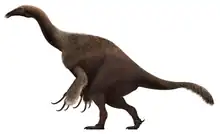
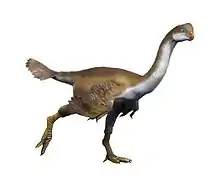
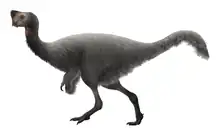
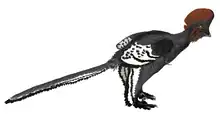


.png.webp)

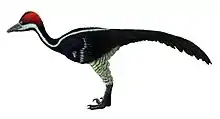
.jpg.webp)
